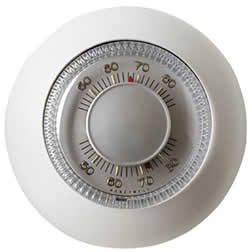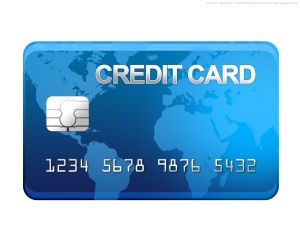Emergencies happen. We like to imagine they won’t happen to us, but we know they do. And often we need a little extra cash to get through those tough times. But where do we find that cash? It’s easy to turn to a credit card or borrow from a friend, but the most secure method, one that keeps you debt free and self-sufficient, is to have an Emergency Fund.
An Emergency Fund is money you have set aside and don’t touch until a true emergency arises.
So how do you start one of these funds?
1. Open a savings account that’s easy enough to access in an emergency, but not so easy that you’ll be tempted to tap into the fund for non-essentials.
2. Choose an ideal amount of money for your completed Emergency Fund. Most people choose a number that covers 3 – 12 months of expenses.
3. Start small and work your way up to your ideal fund. Even if you can only set aside $100 when you open your Emergency Fund, that’s great because you’re on the path to financial security.
4. Pay into your Emergency Fund every month. Treat it like a bill and don’t skip payments.
Over time, you’ll reach your Emergency Fund goal. At the outset, setting aside a year’s worth of expenses may seem like an impossible goal. But even if it takes you a few years to reach this goal, you’re taking on the path to financial independence and that’s something to be proud of.
We’ve all seen the lists of 10, 25, even 100 great ways to save money. But trying to implement more than one new habit at a time can be overwhelming and often leads to failure to make any change at all. What if you had one tip that’s easy and guarantees some more cash flows into your savings account every month?
PAY YOURSELF FIRST.
This budget tip is one that’s often touted but often ignored. We feel like we have to pay all our other bills before our savings account. But once the electric and heat, rent or mortgage, and groceries are paid for it looks a lot harder to put a little cash into your savings account. By the time your done with all your bills, you might be sick of feeling like that responsible adult you know you are. Or you might look at that number that’s left and think you might need it soon so putting it in savings is useless because it will just come back out.
But what if your savings account were a bill, too? And what if you paid it before any of the others? Before you had time to let monkey mind talk you out of saving part of every paycheck?
Well, then you’d find yourself implementing a savings plan.
It doesn’t matter how much you pay yourself. What matters is that it’s either a number or percentage that you pay every time you get paid. The number should make you feel good about yourself and the way you manage your money. You should be willing to hold yourself accountable to that number. Even if you can only put in five dollars or three percent of your paycheck, it’s five dollars or three percent more than you had last month.
If you want to make this goal really easy, just set up an automatic transfer to your savings account for every payday and you savings will slip into their special account before you have the chance to intercept it. That’s saving made easy.
Eating seasonally is all the rage these days and when spring comes many will return to the farms markets for the first delicacies of the growing season like asparagus, baby lettuces, and ramps. Later in the summer we’ll find inexpensive pints of blueberries and by August giant zucchinis for a dollar apiece because farmers can’t get rid of them fast enough.
But what do we do now, in February, when Punxsutawney Phil has just promised us six more weeks of winter? If you preserved plenty of food in the summer, then you can skip the rest of this article and go spread some of that summer cherry jam on your homemade bread, you lucky dog, you.
If, like me, you didn’t preserve much or anything, then it’s a little tougher, but still fun. It’s time to embrace the onion, the carrot, the cellar apple, and the potato. In most cities, you’ll find at least one market open year round. In Pittsburgh, there’s the Farmer’s Market Cooperative of East Liberty. Indianapolis has the Indy Winter Farmer’s Market and DC has the Dupont Circle Market. With a little research, you can hunt one down in your area. If there’s not a farmer’s market, you can still save a little by choosing seasonal items at the grocery store.
In the northern U.S., you’ll be embracing warming foods like potato soup, beef stew with root vegetables, and squash in all it’s orange goodness. In the south (especially Florida), you’ll be able to find strawberries and citrus at the markets. This is good for us in the north, too, because it means oranges are priced a bit better for us, too.
The best part? These foods have all the nutrients in them that we need most in the winter when colds and flus strike like Vitamin C, beta carotene, and quercetin. So start your menu planning with a big bowl of Irish stew or a side of roasted carrots and onions with a favorite meat or mushroom main – yum!
With this method, you won’t be buying blueberries this month (they’re extremely expensive and shipped from afar), but when they do start to come into season in your area and you’re already in the habit of eating seasonally…the taste of those berries will reward your taste buds and your wallet.
It’s never too early to develop a healthy relationship with money. Whether you’ve got your financial life handled well or you struggle to stay on budget and to save, you can teach your kids to be money-conscious with a few regular activities and practices like these.
Go shopping. When you go grocery shopping, take your kids and get them involved in the shopping process. You can do a variety of activities depending on the age and interests of your kids. Let them clip coupons with you, browse the sale flyer, and/or make your grocery list before you go. Share your budget with your kids and bring a calculator or pen and paper along so that your kids can tally up the total of items in your cart to make sure you stay under budget.
Give an allowance. Give your kids some money every week that they can manage themselves. It doesn’t need to be related to chores or anything (though it can be) to teach your kids to appreciate it and start budgeting. It’s the perfect opportunity to help them learn what happens when they spend all their money right away versus when they save money.
Offer money earning opportunities. If your kids are older and looking for more money than their usual allowance, offer them the chance to earn it instead of just giving them cash or denying their ask. By allowing them to earn a bit of cash in addition to their allowance they’ll learn the value of having a job early and will be more likely to make responsible work choices in the future.
Encourage saving. You’ve given them an allowance and offered them the option of earning more cash, but what are they doing with it? Help them understand why saving is a good idea by taking them to the bank to open a savings account, putting part or all of their allowance in a cute piggy bank, and telling them about how and why you save money.
Play games. Break out the Monopoly board or Payday for the older kids. Both games teach kids about being able to afford money, the consequences of unplanned spending, and many other money lessons all hidden inside a fun family game.
We all like to stay warm and cozy in the winter, but cranking up the heat is costly and can consume our budgets in the coldest months of the year. It’s much healthier to live in a warm house, so you know you’ll spend on it no matter how high the costs go. But why let your heating bill control you when you can try some of these tip to bring it down?
Tune-up. Make sure your heating system is operating at peak efficiency by having your boiler or furnace checked out and maintained each year. In a typical cold winter you’ll more than recover the cost of maintenance as a well-tuned furnace runs much more efficiently than a neglected one.
Get a programmable thermostat. Using a programmable thermostat could save 10 – 20% per bill if you use it wisely. Turn down the heat to about 55 degrees at night or when you’re not home. Program the thermostat to turn back up to your favored temperature about twenty minutes before you return from work and about twenty minutes earlier than you set your alarm clock for. Don’t have a programmable thermostat or the cash to install one? You can still turn down your heat while sleeping and while at work, it just requires more diligence.
Let the sun shine in. Use solar heat by keeping the blinds open and letting the sun warm your house during the day. Not only will it lower your heating bill, the natural light will help keep the winter doldrums at bay.
Hang thermal curtains. A good set of insulated can keep in a surprising amount of heat. Keep them shut at night and on gray days and you’ll hang onto more of that precious heat you’re paying for and stay comfy.
Fill the gaps. Windows and doors are notorious culprits for letting heat escape. Check for drafts and install weather stripping, caulking, or other appropriate material to keep heat in.
Dress for the weather. Dig into your closet for your favorite winter wear: fuzzy slippers, chunky cable knit sweaters, long scarves, handmade shawls…don’t you just love them? Pile on your fashionable layers and curl up on the couch with a book content in the knowledge you’re snug enough to turn the thermostat down a couple degrees.
Use a space heater. If you only use one or two rooms in the house most of the time, keep the thermostat low and then warm up the room you’re in with a space heater. Perhaps you work at home and spend almost eight straight hours in your office – why heat the whole house when a space heater will keep you warm?
Flipping through the mail you find another invitation to apply for a credit card with an incentive printed brightly on the front of the envelope: 50,000 points with first purchase, earn a $50 gift card at XYZ (insert your favorite store here), etc. It’s mighty tempting to fill out that application. Especially when all the other mail is bills, maybe even one you forgot about that puts going shopping this weekend out of the budget.
So, how do you decide whether or not to open that envelope and fill out the application. The credit card is a useful and dangerous little tool. Keep reading for some pros, cons, and alternatives to credit card use.
Credit cards can give us many appealing options.
A line of cash at your fingertips when an emergency arises:
When your car quits on the side of the road, your toddler spills juice on your laptop, or you’re injured, having a line of credit to fall back on can feel like a life saver. Perhaps you’re more comfortable going through life with that little ace in your back pocket. When you’re out buying a replacement laptop at the last minute, you might even hear yourself thinking, “Paying the interest on this is so worth it.”
But how do you define emergency? Does the definition ever get a little gray? Perhaps you’re out shopping with a friend and see a new pair of shoes that you really like and SCORE they’re on sale! But you hadn’t budgeted for them just yet – you were planning on buying new shoes next month. Does the credit card slip out of your wallet? It’s not a big deal if it just slips once, but one purchase can lead to others and land you waiting for AAA wondering how you’re going to pay them.
An alternative? Instead of planning to use a credit card for emergencies, set aside a special savings account for the unexpected. Set aside a number that’s comfy for you and similar to the amount of cash available on a credit card you’re thinking of getting or already have. Once you’ve created your emergency fund (whether you can do it right away or it takes a few months to save up enough), then ditch that emergency credit card and all its risks. Just make sure your emergency fund is easy for you to access.
Rewards programs:
Earning airline miles, hotel points, gift cards, and more sounds appealing when you apply for a credit card. Some people take advantage of these rewards well enough that they really do benefit from their credit card. If you pay off your entire bill every month and don’t accrue interest on the account, you can earn yourself free flights and gift cards to help you jump start your Christmas shopping. It’s a great deal. If you use it wisely and spend enough to earn the points. But if you spend more than you can pay off, then you risk spending more in interest than you’ll earn in rewards. And that’s just no fun.
Alternative? Get your rewards elsewhere. See if your debit card has a rewards program and use it! Pick one store where you do your grocery shopping and sign up for their rewards card. Do the same with your pharmacy, gas station, or any place you regularly shop that offers a free rewards programs. Look for ways to earn rewards for things you do anyway other than spend money. For example, sign up with SwagBucks and use their search engine – you can win points when you search that you can then redeem rewards.
Build your credit:
If you’re young and have little or nothing to go into a credit report it can be tough to get even a small loan for a new couch or to rent an apartment without a co-signer. A credit card can be a great, quick way to build up your credit and make it easy for you to get bigger loans in the future, say, when you want to buy a house. But it’s only good if keep up with the payments. It’s easy to overspend and fall behind, which can send you quickly from having no credit to having bad credit (which is worse than none).
Alternative? Don’t be afraid of asking someone to co-sign with you on an apartment lease or for a car loan when you’re ready to take those steps. You’ll build your credit over the course of the lease or loan without the risks of overspending and sending your credit score into disarray. You can also help your credit score (at least as its reported through some agencies) by paying all your bills on time. If you want to get something similar to a credit card, consider a charge card – they work the same way but with a charge card you’re required to pay the bill in full each month.
You’re standing in the checkout line at the grocery store browsing the magazine headlines, without even thinking about it you toss a pack of gum in your cart.
You’re driving home from work and you had a really lousy day. Since the mall is on your way home, you stop in just to window shop and leave with a brand new two hundred dollar coat, even though the one you’re wearing is just fine.
A friend wants to stop for a cup of coffee on the way to the library. You didn’t really want one, but once you’re in the coffee shop with him you order a latte. You end up throwing half of it away because you didn’t really want it in the first place.
Any of these moments sound familiar? They’re moments when we succumb to impulse buying. We all do it. But it can wreak havoc on our wallets. Want the cycle of undrunk lattes, unchewed chewing gum, and extra winter coats to end? Use some or all of these tips to quit impulse shopping and get your finances under control.
Shop with a list. Write down what you need from the mall or grocery store before you head out. Be thorough and careful. When you get to the store, don’t deviate from the list. This can be tough if you’re new to it, but over time it becomes a habit and yields positive results for your finances.
Go shopping less often. Head to the mall when you need a new outfit for work, not because it’s a Saturday and you’re bored. Go grocery shopping once a week or less instead of every day on your way home from work. The less time you spend with merchandise, the less likely you are to buy it.
Don’t grocery shop hungry. This is an old piece of advice, but it works. If you go to the grocery store when you’re hungry, you’re more likely to make impulse purchases based on what looks delicious right then and there, whether or not you’ll be interested in it later in the week when it actually comes time to eat it.
Shop with a friend. You’re less likely to break your new rules if you have a chaperone.Find a friend who is willing to hold you accountable and/or shares your goal to quit impulse buying. Explain your goal to your friend before you go and then ask her to keep you in check on your shopping trip.
Track your expenses. Write down every penny you spend and what you spend it on. Whether it’s an impulse buy or a planned purchase, track it. If you can see where your money, you’ll be less compelled to spend it on unnecessary items. For a really stark look, take a sheet of paper and write down your income for a month and your spending in the following categories for that same month: food, savings, and impulse.
Take a deep breath and think about it. If it’s a candy bar at the grocery store you’re after, then close your eyes for a moment and reevaluate the purchase. If it’s a larger purchase like fancy pair of shoes or a new smart phone, head home to think about it. If it’s something you really want, take the time to shop around and find exactly what you want for the right price.
Make a slush budget for impulse purchases. Sometimes we don’t want to worry. Sometimes we want to forget limitations and just shop because it’s fun. There’s nothing wrong with that. But you’ll save yourself plenty of headaches if you budget for those excursions and stick to it. If you set aside $100 and make a date to go shopping with a friend, you can then blow that hundred on whatever you want – guilt and debt free.
Spend less.
Save more.
Get out of debt.
Financial resolutions are some of the most common promises we make to ourselves at New Year’s. It’s a great feeling to be in control of your finances and debt free with a healthy savings account. But having that stability takes more than a resolution to save more sealed with a champagne toast. Many resolutions don’t make it past the first week of the new year.
Often, New Year’s resolutions don’t last because we never take the step of turning a resolution into a goal. A resolution is merely the moment of formal decision: I will spend less this year. There’s no measurable way to determine your success and there is no plan to succeed.
A well-defined goal, however, is much easier to measure. If your resolution is to save more, then you might make a goal like this:
I will put five percent of each paycheck into my savings account.
Read that statement again: I will put five percent of each paycheck into my savings account.
Does it sound more powerful and doable than save more?
I bet it does.
Why? Because this goal is clear and concise. It tells you exactly what you’re going to do and when you’re going to do it. It’s much easier to make a change when you know exactly how you’re going to do it.
The key is to take the time to consider what you really want and then plan how you will make it happen. Be specific and realistic and you’ll be on your way to keeping your resolution(s). Now that’s worth a champagne toast.
Here are some more examples to inspire you in your quest:
Resolution: Spend less.
Possible goals:
I will bring my lunch to work instead of buying it at least three days per week.
Before I go to the mall, I will set a budget and stick to it.
Resolution: I will be debt free.
Possible goals:
I will pay $100 each month toward my credit card bill so that I can pay it off by December 31, 2012.
I will take some time before the end of January to assess my debts and create a realistic debt pay-back plan.
What are your New Year’s Resolutions and how are you going to turn them into goals you can keep in 2012?
We all want to save more money, but we often don’t feel like we can do it. It’s easy to make excuses or to dip into our savings when something fun tempts us. But there are a few ways to save that are so simple you almost won’t notice you’ve started doing it. Try one or all of these five examples to pad your savings.

- Keep the change. Switch your plastic for cash to help keep track of your budget and then implement this easy savings strategy: Don’t spend your coins. At the end of the day or the week pop all the coins into a jar or piggy bank – you’ll be surprised how quickly the change adds up! If you’re really committed, you can do the same with one-dollar bills.
- Drink tap water. Invest in a reusable water bottle and fill it up everywhere you go. Water is the best liquid we can give our bodies, it’s more thirst quenching than any drink (even those fancy sports drinks). Your body and wallet will thank you when you cut your calories and your spending by switching soda and juice for water.
- Use an automatic transfer. Instead of just telling yourself to save every time your paycheck comes in and then choosing a number in the moment when you’re tempted by your new influx of cash, think ahead. Set up an automatic transfer to your savings account that occurs as often as you get your paycheck. Choose a reasonable number that makes you happy and then treat it like a bill you need to pay.
- Get rid of your credit card. There are very few times in life when we truly need to buy anything with credit. Avoid temptation by paying off and canceling your credit card(s). If you want to keep one for emergencies, hide it in a different part of your wallet and don’t touch it unless you’re in dire straits.
- Downgrade your cable. How much television do you really watch? If you’re like most people, you’re paying for a lot more than you use. Look carefully at your bill and all your TV and movie watching alternatives like Netflix, Blockbuster and Hulu, and then decide on a less expensive option that still allows you to enjoy your favorites.
If you’ve left your shopping for the last minute, there’s no need to panic. You can get out of this pickle easily with a card and cash. But if you don’t want to give cash, you still have many budget-friendly options (yes, even if it’s Christmas Eve). Choose any of these five ideas or use them as a jumping off point to inspire your own creative gift solution.
1. Box of candy. Depending on your talent, time left until Christmas, and ambition you can go for homemade or store bought for this festive gift. Stop by a candy shop and get an assortment of handmade candies. Do a gift basket of the recipients favorite candy bars. Or take the time to make your own homemade truffles or buckeyes wrapped up in a fancy box.
2. Coffee lovers assortment. Hit up a local coffee roaster to buy some fresh beans in a variety of styles and/or flavors. You can find pre-made gift baskets or mix and match items to create your own. Perhaps you’d like to check out a thrift store to find an inexpensive mug and fill it with homemade chocolate coffee spoons that you wrap up with a pound of tasty coffee beans?
3. Magazine subscriptions. Most magazine subscription prices are really cheap. You can subscribe online and print out a little note about the subscription to put inside a holiday card. Every month when the recipient receives the magazine they’ll remember how thoughtful you are. (Hint: This is one of those gifts that’s easy to get if you’ve left all your shopping for Christmas Eve.)
4. Books or gift cards for books. E-books are cheap, easy to give and download instantly. You can also give a gift card for a bookstore or e-book store; for a special touch you can add a list of books that you like and think your loved one might like, too.
5. Photos. Head over to a the photo department at the store and print out a photo or two. Purchase and inexpensive frame to slide the photo into and you’ve got a thoughtful gift that will delight just about anyone.







